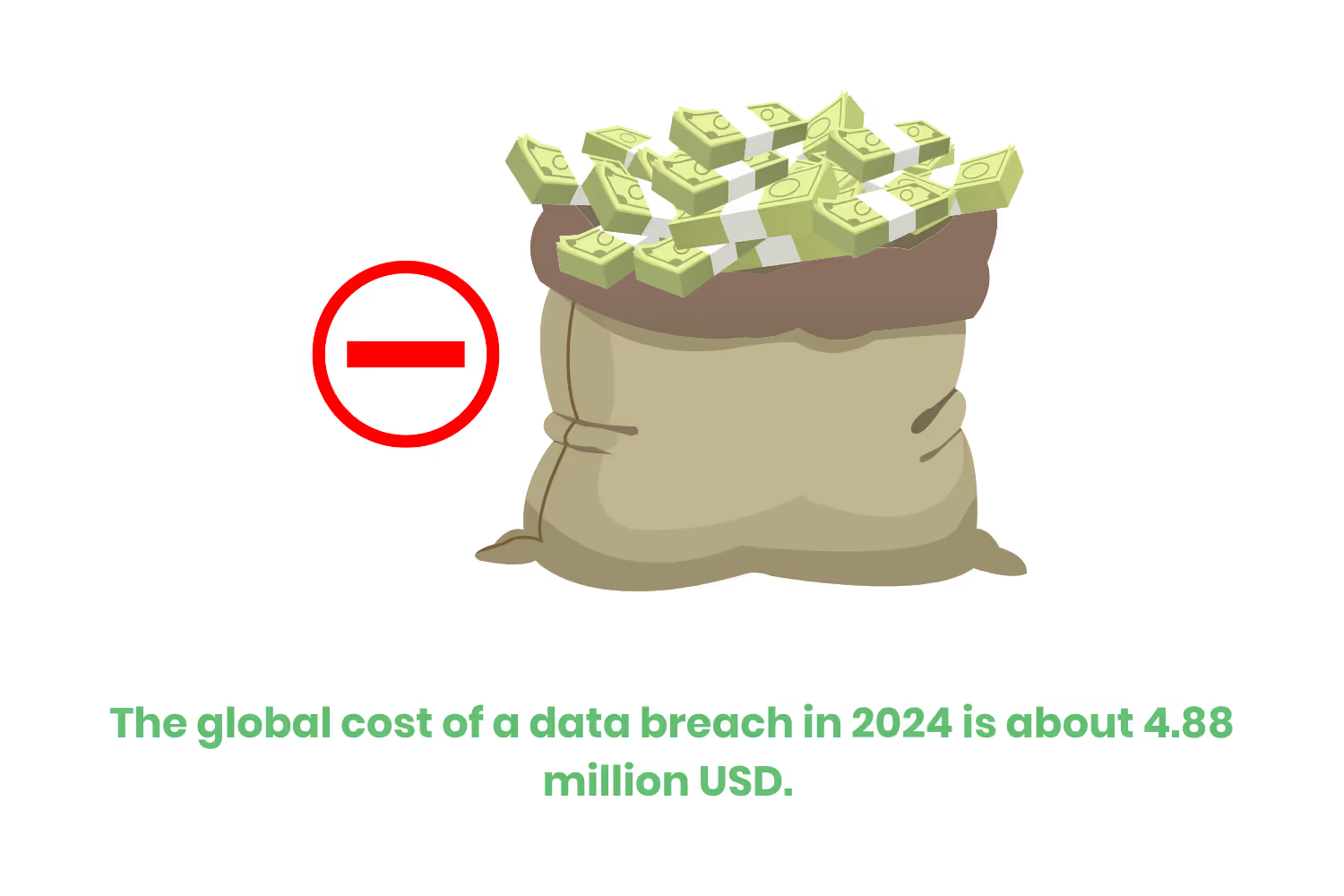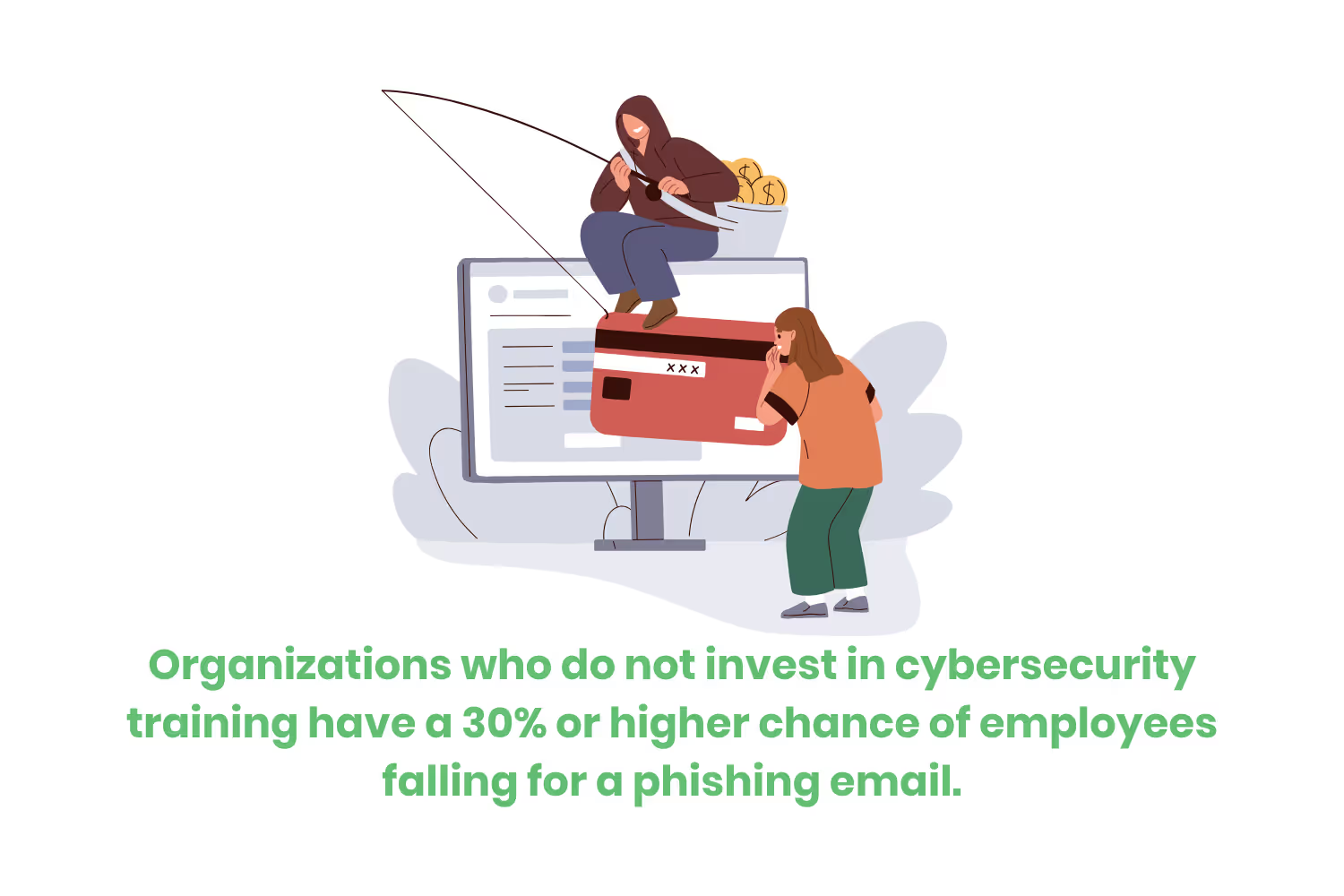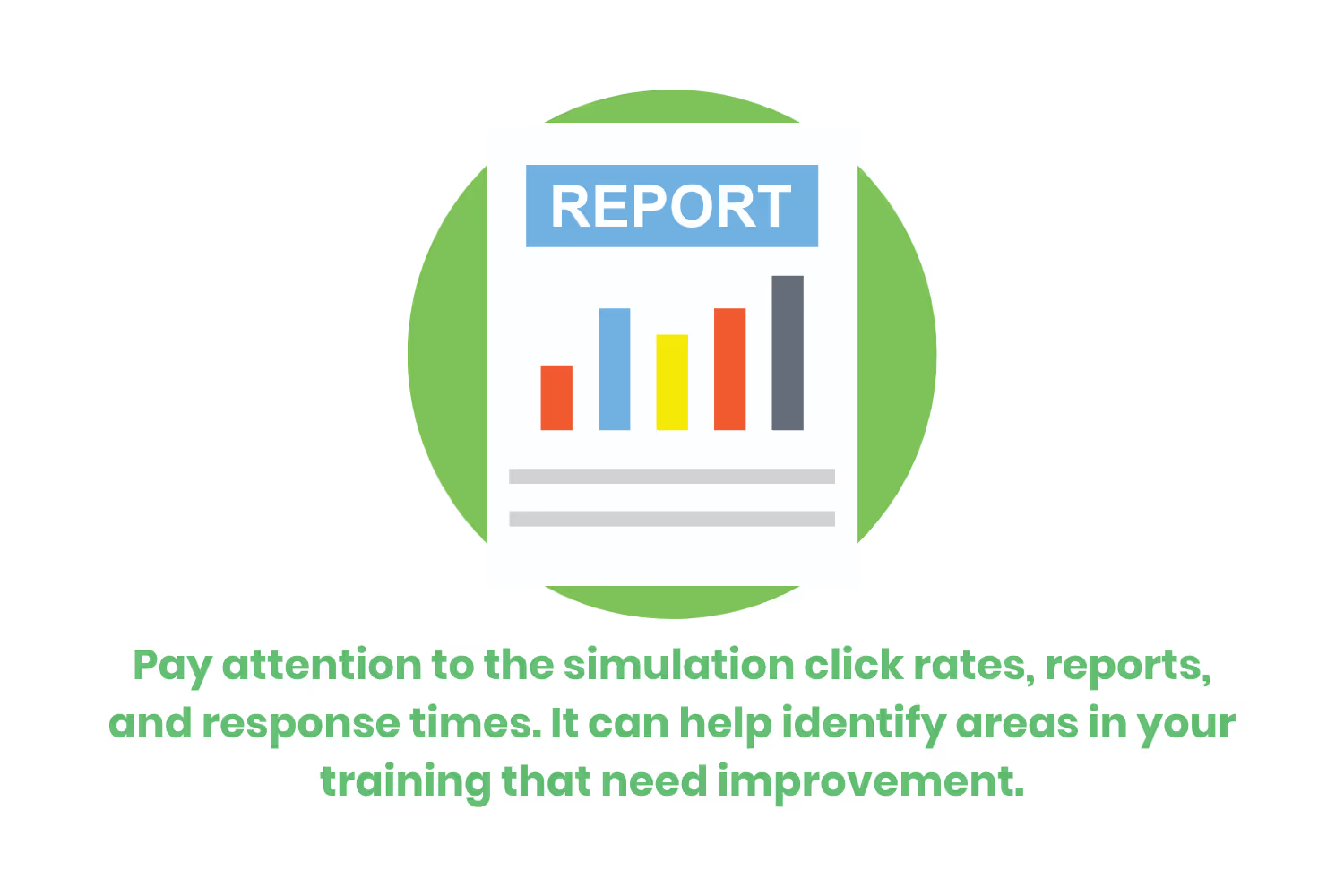Phishing Simulations: Everything You Need to Know
One of the most effective tactics is learning through a phishing simulation. Let’s focus on what a phishing simulation is, why they are important, and how they work.

In the sitcom “The Office”, one of the episodes mentions the negative effects of falling for a phishing scam. Toby Flenderson, who works in the company’s human resources team, asks Michael Scott, “Didn't you lose a lot of money on that other investment, that one from the email?” To which Michael passionately replies, “You know what, Toby? When the son of the deposed King of Nigeria emails you directly asking for help, you help. His father ran the freaking country, okay?”
This scene references one of the first widespread examples of a phishing email. The “Nigerian Prince” email promises the return of great wealth to those who pay a small fee. Hackers then take the card information the victim provides. They will then proceed to drain their account of money.
While this is a funny bit in the show, the reality of falling for a phishing scam is no laughing matter. According to IBM, the global cost of a data breach in 2024 is about 4.88 million USD. From previous years, current trends show that this number continues to increase. Cybercriminals are utilizing evolving technology and social engineering to perform data breaches. Leaving businesses scrambling to build their defenses.

One of the best ways to protect sensitive data is through education and training. In fact, organizations that do not invest in cybersecurity training have a 30% or higher chance of employees falling for a phishing email. Establishing a phishing awareness program can look like many things. One of the most effective tactics is learning through a phishing simulation. For today, we will focus on what a phishing simulation is, why they are important, and how they work.
What is phishing?
Phishing is a type of cyberattack that hackers use to steal sensitive information. Both from individuals and organizations. Sensitive information could be anything from social security numbers, credit card numbers, or even account passwords. There are many different types of phishing, but the most common include the following:
- Email phishing: This is pretty much what it sounds like. You get an email from an unknown sender pretending to be someone you know. This of course is a hacker hoping to gather sensitive information from you by having you click on malicious links or attachments.
- Spear phishing: A malicious email sent to a specific person. Hackers will use information they already know about the person in the phishing email. Information often includes their name, place of employment, and even names of trusted colleagues or family members. This poses a dangerous threat, often prompting recipients to lower any guards they may have up.
- Whaling: Similar to spear phishing, whaling involves a targeted attack on a senior management member of a company or organization. Because the leaders of organizations have their information readily available online, this helps hackers specifically target their prey. Crafting a more personalized phishing attack.
Due to the most common types of phishing taking the form of an email, it’s important to train your employees on the signs to look for. After all, according to the 2024 Data Breach Investigations Report, 68% of cybersecurity breaches are due to a human element. Such as someone falling for a phishing scam. Just in case you needed more of a reason to take training and compliance seriously!

Having an effective training process can look like annual mandatory coaching videos as well as company-wide testing on competency. But one of the most effective ways to show your staff just how simple it is to fall victim to a cybersecurity breach is through having them experience it themselves… in a controlled environment of course! No, I am not talking about letting them fall victim to a cybersecurity attack. Instead, I’m talking about simulating one instead. In this case, I’m talking about a phishing simulation.
What is a phishing simulation?
When you think of the word “simulation”, what comes to mind first? I personally think of The Sims, but that’s just me. Really, simulations are imitative representations of situations that might happen in real life. So add the word “phishing” in front of it and you have the imitation of real-world phishing emails.

Sending out these fake phishing emails to simulate real ones is a helpful tool when it comes to training your employees on cybersecurity etiquette. This way, you can assess and keep track of each individual’s online habits and their knowledge level concerning phishing. If your employee clicks on the fake link, this lets you know that they need a little extra help when it comes to training. These emails mirror everyday emails that your employees will likely face.
Why are phishing simulations important?
You could wander around your office and ask your employees if they took their phishing training, sure. They would say “yes” and you could count that as compliance… BUT who’s to say they weren’t nodding off at the computer while watching the videos? Or maybe a few months after watching the videos, they completely forget what to look out for.
Peppering questions throughout your training videos is essential. They help people better retain what they are learning. But even then, if you only have these quizzes regarding cybersecurity available annually, how are you going to gauge your employees’ aptitude throughout the year?
Providing interactive training through phishing simulations keeps your company on its toes year-round. You don’t have to wait to send them out. You can customize how often to test your employees without taking up too much of their time. You can add them to any cybersecurity training program you currently use. Without interfering with current processes. Simulations ultimately help to reduce risk. As well as build threat resilience and create a security-centric company culture.
What makes an effective phishing simulation?
With cybersecurity threats becoming more sophisticated, your company needs a robust training program. One that stays up to date with real-world scenarios. Training can quickly become outdated and stale in the world of science and technology. An effective strategy when implementing phishing simulations is to incorporate the following:

- Realistic elements. Incorporates the latest trends and techniques cybercriminals use. This helps simulations stay relevant and challenging for users. Examples might be anything from fraudulent shipping confirmation messages to random gift cards.
- User-friendly interfaces. Having an intuitive design to your interface eases the process of sending out emails. Creating, deploying, and monitoring every simulation is easy by investing in straightforward software. Why over-complicate the solution to an already complicated problem?
- Customizable scenarios. Don’t just limit yourself to a pre-loaded group of phishing scenarios. Have the ability to create and adjust your simulated cyberattack however you’d like! You can increase the realism and impact of your emails by changing the variables based on the department or individual within the organization you are testing.
- Seamless integration. Find software that aligns easily with any existing training you may have. As well as any cybersecurity goals you enforce within your company. Easy integration with your current training systems allows users to quickly move from simulations to educational content.
- Data-driven performance measurement. Tracking metrics through analytics can help you improve your phishing awareness strategy. Paying attention to click rates, report rates, and response times can help identify any areas in need of improvement. You can also compare data over time. This helps by periodically assessing the effectiveness of your training.
Conclusion
I bet you thought we didn’t have more “The Office” quotes, but I’ve got one more for you. In another episode, Pam Beesly pokes fun at Michael Scott saying, “Once every hour, someone’s involved in an internet scam. That man is Michael Scott.” Obviously, Michael did not pass his cybersecurity awareness training.
Preventing phishing-related data breaches takes education and training. Keeping the conversation going by implementing phishing simulations throughout the year is key. It will help keep your cybersecurity goals at the forefront of every employee’s mind. Avoid financial loss, compromised data, and more by fortifying your cybersecurity compliance program.
Emphasize your product's unique features or benefits to differentiate it from competitors
In nec dictum adipiscing pharetra enim etiam scelerisque dolor purus ipsum egestas cursus vulputate arcu egestas ut eu sed mollis consectetur mattis pharetra curabitur et maecenas in mattis fames consectetur ipsum quis risus mauris aliquam ornare nisl purus at ipsum nulla accumsan consectetur vestibulum suspendisse aliquam condimentum scelerisque lacinia pellentesque vestibulum condimentum turpis ligula pharetra dictum sapien facilisis sapien at sagittis et cursus congue.
- Pharetra curabitur et maecenas in mattis fames consectetur ipsum quis risus.
- Justo urna nisi auctor consequat consectetur dolor lectus blandit.
- Eget egestas volutpat lacinia vestibulum vitae mattis hendrerit.
- Ornare elit odio tellus orci bibendum dictum id sem congue enim amet diam.
Incorporate statistics or specific numbers to highlight the effectiveness or popularity of your offering
Convallis pellentesque ullamcorper sapien sed tristique fermentum proin amet quam tincidunt feugiat vitae neque quisque odio ut pellentesque ac mauris eget lectus. Pretium arcu turpis lacus sapien sit at eu sapien duis magna nunc nibh nam non ut nibh ultrices ultrices elementum egestas enim nisl sed cursus pellentesque sit dignissim enim euismod sit et convallis sed pelis viverra quam at nisl sit pharetra enim nisl nec vestibulum posuere in volutpat sed blandit neque risus.

Use time-sensitive language to encourage immediate action, such as "Limited Time Offer
Feugiat vitae neque quisque odio ut pellentesque ac mauris eget lectus. Pretium arcu turpis lacus sapien sit at eu sapien duis magna nunc nibh nam non ut nibh ultrices ultrices elementum egestas enim nisl sed cursus pellentesque sit dignissim enim euismod sit et convallis sed pelis viverra quam at nisl sit pharetra enim nisl nec vestibulum posuere in volutpat sed blandit neque risus.
- Pharetra curabitur et maecenas in mattis fames consectetur ipsum quis risus.
- Justo urna nisi auctor consequat consectetur dolor lectus blandit.
- Eget egestas volutpat lacinia vestibulum vitae mattis hendrerit.
- Ornare elit odio tellus orci bibendum dictum id sem congue enim amet diam.
Address customer pain points directly by showing how your product solves their problems
Feugiat vitae neque quisque odio ut pellentesque ac mauris eget lectus. Pretium arcu turpis lacus sapien sit at eu sapien duis magna nunc nibh nam non ut nibh ultrices ultrices elementum egestas enim nisl sed cursus pellentesque sit dignissim enim euismod sit et convallis sed pelis viverra quam at nisl sit pharetra enim nisl nec vestibulum posuere in volutpat sed blandit neque risus.
Vel etiam vel amet aenean eget in habitasse nunc duis tellus sem turpis risus aliquam ac volutpat tellus eu faucibus ullamcorper.
Tailor titles to your ideal customer segment using phrases like "Designed for Busy Professionals
Sed pretium id nibh id sit felis vitae volutpat volutpat adipiscing at sodales neque lectus mi phasellus commodo at elit suspendisse ornare faucibus lectus purus viverra in nec aliquet commodo et sed sed nisi tempor mi pellentesque arcu viverra pretium duis enim vulputate dignissim etiam ultrices vitae neque urna proin nibh diam turpis augue lacus.




![[ANSWERED] Is Zelle HIPAA Compliant?](https://cdn.prod.website-files.com/67e2b8210878abcba6f91ae6/68ad098bff78a96fcbd12339_IsZelleHIPAACompliant_224.avif)